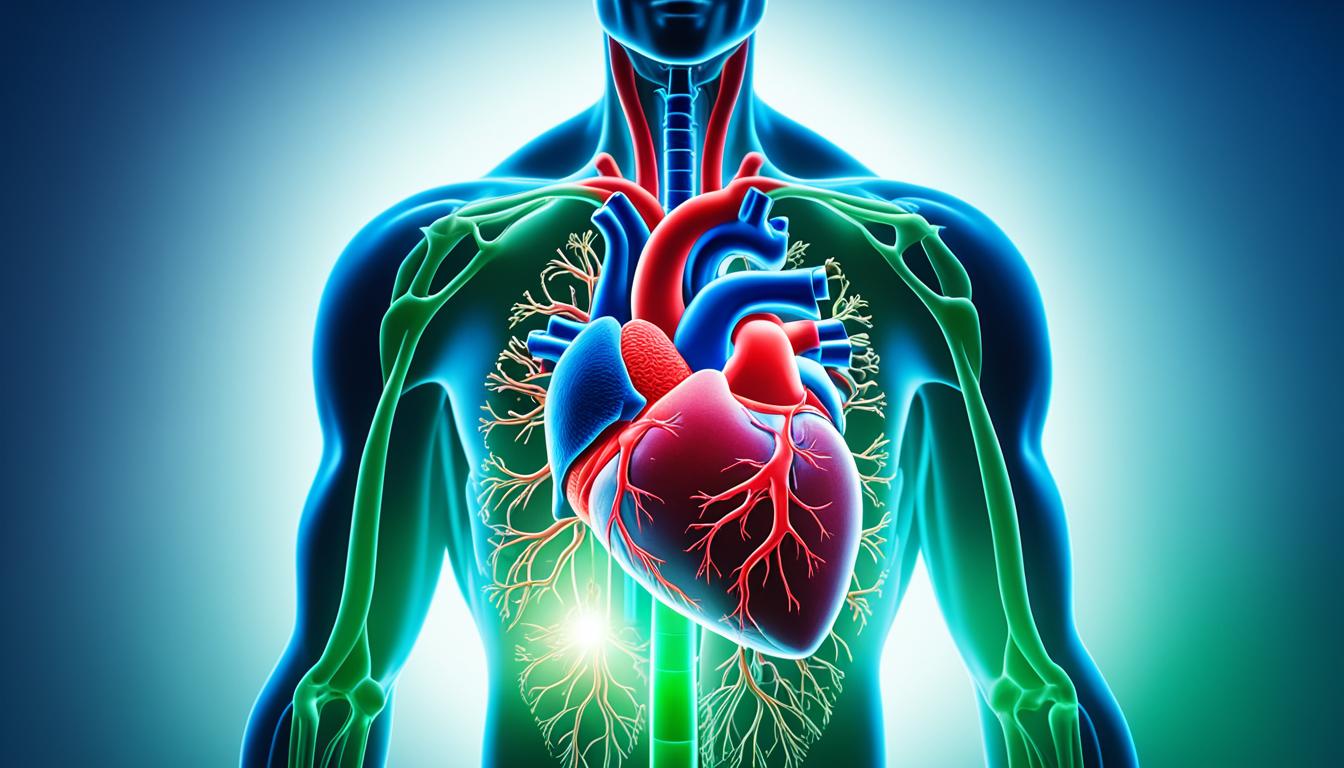Heart attack disease, known as myocardial infarction, is serious. It’s when blood flow to the heart gets blocked suddenly. This happens because a blood clot forms in a coronary artery. This blockage stops the heart muscle from getting the oxygen and nutrients it needs. Without quick medical help, a heart attack can cause severe heart damage or death.
To catch heart attack symptoms early and get treatment fast, knowing what to look for is key. Symptoms can include severe chest pain, feeling like you can’t catch your breath, nausea, or feeling woozy. Pain or discomfort might also spread to your arm, shoulder, jaw, or back. Getting help right away if you have these signs can lower the chance of lasting harm to your heart.
The main cause of heart attacks is a condition called coronary artery disease (CAD). It happens when the heart’s blood supply arteries get narrow or blocked by fatty buildup. Smoking, high blood pressure, diabetes, being overweight, and not moving enough are also big risk factors for heart attack disease.
Diagnosing a heart attack involves looking at your medical history, examining you, and doing some tests. These tests can include an electrocardiogram (ECG), echocardiogram, stress tests, or heart catheterization. They help doctors find out how much damage your heart has and figure out the best treatments.
Stem cell therapy is a new and promising way to treat heart attack disease. Stem cells can turn into different types of cells, including heart muscle cells. By putting these stem cells right into the heart, they can help fix damaged areas and make the heart work better. The cells used can come from the patient’s own fat tissue or bone marrow. The amount of cells given depends on the patient’s age and size.
Studies have found stem cell therapy to be helpful for heart conditions, with nearly 9 out of 10 patients seeing some improvement. This treatment works by making the heart muscle stronger and by promoting new heart tissue. That’s why stem cell therapy looks like a good way to treat heart attack disease and other heart issues.
Key Takeaways:
- Heart attack disease is a medical emergency characterized by a sudden blockage of blood flow to the heart.
- Recognizing the symptoms, such as chest pain and shortness of breath, is vital for prompt medical intervention.
- Coronary artery disease is a common underlying cause of heart attack disease, often caused by the build-up of fatty plaques in the arteries.
- Diagnostic tests, including ECG and cardiac catheterization, help determine the extent of heart damage.
- Stem cell therapy is a promising treatment option that aims to repair damaged heart tissue and improve cardiac function.
Heart Failure and Ischemic Heart Diseases
Heart failure and ischemic heart diseases are serious issues all over the world. They happen when the heart doesn’t get enough blood flow. This can be due to blocked or narrowed blood vessels.
The top reason for ischemic heart disease is a condition called atherosclerosis. It’s when the blood vessels that carry blood to the heart narrow. This happens because fatty plaques build up on the artery walls, stopping enough blood and oxygen from getting to the heart.
Other causes of ischemic heart diseases include embolism, torsion, and blood vessel compression. Or it might be from blood vessels not working right. All these reduce blood flow to the heart. This can lead to heart damage and possibly heart failure.
Causes of Ischemic Heart Disease
The main culprit behind ischemic heart disease is atherosclerosis. Many factors influence atherosclerosis:
- High blood pressure
- High cholesterol levels
- Smoking
- Obesity
- Diabetes
- Sedentary lifestyle
These things help plaques grow in your arteries. The plaques then make the blood vessels narrow. This stops enough blood from reaching your heart, which can cause damage.
Spotting and preventing ischemic heart diseases early is key. You can lower your risks by making lifestyle changes. This includes regular exercise, eating a healthy diet, and stopping smoking.
Sometimes, you may need medical help. This can include taking medicines for blood pressure and cholesterol. Or you might need a procedure to open up blocked blood vessels.
| Signs and Symptoms of Ischemic Heart Disease | Complications of Ischemic Heart Disease |
|---|---|
|
|
Regular heart health checks and early treatment can help a lot. They can lower the risk of complications and make life better for those with heart diseases.
Diagnosis and Treatment of Heart Failure and Ischemic Heart Diseases
Doctors can diagnose heart failure and ischemic heart diseases with lab tests. These tests look for heart-specific markers like troponin and CK-MB. They show how much damage the heart has and if there are other heart issues.
They also use tests like chest X-rays, ECGs, echocardiography, and cardiac catheterization. These find problems with the heart’s structure or blood vessels.
For treatment, lifestyle changes are often the first step. This includes eating a heart-healthy diet, staying active, and not smoking. These changes can help control symptoms and make the heart stronger.
Doctors may also give medicines. These can include beta blockers, ACE inhibitors, and diuretics. They help with symptoms, lower blood pressure, and make the heart work less hard.
In some cases, a person might need surgery. This could be a bypass, angioplasty, or having stents put in. These procedures can open blocked blood vessels.
Stem cell therapy is a new treatment option. It’s showing potential in making the heart stronger. This could help lessen heart failure symptoms. But, more research is needed to know how well it works in the long run.

